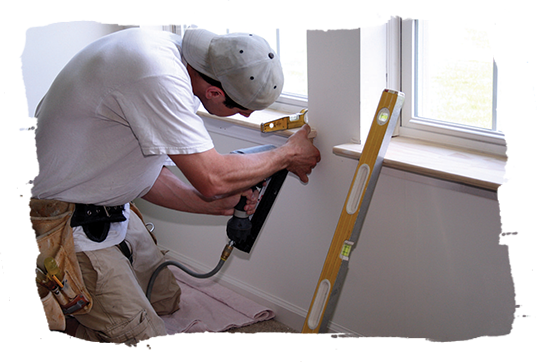
Do homeowners insurance cover damage from a contractor? This article will explain liability rules and how to get your home covered for damages caused by a contractor. You will also learn how to file a claim against your contractor if they cause damage or injury to your property. Continue reading to find out more. These are just a few of the ways you can make a claim. You may be eligible to file a claim for contractor services.
For contractors, getting homeowners insurance
When it comes to contractors and homeowners insurance, there are some things to look for. Contractors licensed need to have general liability insurance. However, some issues may arise that may require you to file a claim against your homeowners insurance. In these instances, your homeowners insurance may cover the damage, but it is a good idea to check with your insurer first before hiring a contractor. Below are some tips to help homeowners get insurance for contractor damage.
First, you must understand the legal implications of a homeowner's insurance claim. Many homeowners mistakenly believe that the contractor's quality is the responsibility of the insurance company. This is false. You must understand the contract between the contractor and the homeowner. Without this contract, your insurer does not have any responsibility for the contractor's quality, progress, or damage. A contractor's insurance company can only pay you if they're negligent, so it's important to check with your insurer before hiring a contractor.

Contractors are responsible for their own liability
Homeowners believe their insurance company is responsible if a contractor does not complete the job on time. Although this may be true, it is important that homeowners understand their contract with contractors to make sure that they don't have to take legal responsibility. This is especially important for homeowners who have homeowners insurance. Homeowners should ensure their contractor insurance is up to date.
A contractor is considered an invited guest under premises liability law. The homeowner owed the contractor an obligation of care by making sure that there was a safe working environment. This duty of care also extends to advising the contractor of any potential hazards. If the contractor did not warn of a potential danger, he or her may be responsible to damages.
Insuring homeowners to cover the damage done by contractors
Ask about the contractor's insurance policy if you are thinking of hiring them. You'll be covered in the event of a mishap, regardless of whether you have liability insurance or property damages insurance. It is important to verify the contractor's license and check their references. Although liability insurance should cover damages and injuries caused by contractors there are instances when it won’t.
Your insurance company should be contacted if you have been damaged by a contractor. The claims adjuster will inspect the damage and give you an estimate of repair costs. Once your insurance company approves a contractor, you will be issued a check equal to the actual cash value of damaged items (or the replacement cost). This is a downpayment towards total repair costs. The contractor will then get estimates from several contractors and submit them for your insurance company. Once they have your permission, they can start the repairs.

Filing a claim
Contractors may not be required to file a claim for damage to your home. You may be able to claim for minor damage through the contractor's policy. In these instances, you could either pay the contractor directly or make repairs yourself.
You should contact your homeowner's insurance provider to let them know that you are unable or unwilling to pay the contractor's fee. Your insurer will most likely send an adjuster out to inspect the damages. They may take a few days to assess the claim, so be patient. Once they have inspected the damage and made the necessary repairs, they will contact your insurance company to set up an appointment.
FAQ
Are handymen insured?
Yes! Most insurance companies cover liability claims up to $1 million for accidental property damage and bodily injury. Your insurance company will typically compensate you for damages if there is a problem during the project.
What do the majority of handymen charge an hour for?
Handyman fees range from $50 to $75 per hour. This is a job that most of them have done for years. Their average time on any job is approximately 10 hours. They don't have the need to advertise, they are well-known within their neighborhood.
They tend to specialize and develop customer relationships over time.
Their key difference from other contractors is their quickness, reliability, and affordability.
The majority of people have at least 2 or 3 friends who they trust enough that they call them when they need assistance.
Some people are so skilled that they run their own businesses.
Are there any tips from a handyman about how to improve my home and make it more beautiful?
Absolutely! Handyman training is in all areas of home repairs and maintenance. He or she will know what needs to be done and what won't. Do not hesitate to seek advice whenever you are in need.
What can a handyman do to install new fixtures and appliances?
You can always hire a handyman to help with these kinds of projects. Before you start installing any appliance or fixture, make sure you have the right information.
Why should I hire somebody to help me do this job?
Hiring a handyman saves time and money. You don't have to hire someone else and it saves you the time and effort of doing the job right the first go. Additionally, the handyman has all the tools and supplies required to do the job properly.
Statistics
- Our handyman services for seniors are provided by professional senior helpers who have been serving the community for over 20 years with 98% customer satisfaction. (cantatahomeservices.org)
- “Once the pandemic hit, that number fell to about 20%.” (inquirer.com)
- Another estimate was that the market in the United States was $126 billion and was increasing by about 4% annually. (en.wikipedia.org)
- “Before the pandemic, 40% of people asked how we could estimate a job when we weren't there,” Rose recalled. (inquirer.com)
- Mila keeps a commission of 20% for each completed service performed by Friends and charges various service fees regarding work done by Pros. (appjobs.com)
External Links
How To
How to Replace Broken Tiles
Step 1: Remove the old tiles.
You can remove the old tiles from your floor and save them. You'll want to keep these intact if you use them later. Note which pieces are missing or damaged to avoid having to search for replacements.
Step 2: Choose New Tiles
You can take a look at the different options for tile replacement.
-
Find a new tile that's similar to the one you removed.
-
You can use the measurements taken when you removed the tile to locate a matching piece. This will make it much easier to find the right size without measuring again.
-
Be open to different colors, patterns or textures.
-
Consider what grout you'd like to use (if any). Some prefer a solid color, while others like mixing it up.
-
You should ensure that the tile you choose is resistant to moisture.
-
The final thing to consider is the location of the tile. It will save you time and money if you make sure there's enough space for the proper installation.
-
Once you've decided on your tile, you can order it online or by calling your local Lowe's to place your purchase.
Step 3: Install the tiles.
You can install new tiles in the same way you did before. It is important to align them correctly so they fit together properly.
Step 4 – Clean up
Be sure to vacuum up all crumbs and debris before applying the last layer.
This will prevent dirt or dust from collecting between the tiles and causing mold.
Step 5 -- Sand the Floor
After you have cleaned everything, sand the floor to remove any particles that were left from the previous step.
Step 6 – Finish Off
After the floor has been smoothed, you can apply protective coatings to the tiles. It is important to wait before you apply the protective coatings.
You can always use a "damp and dry" product on your floors to protect them from staining.
It won't solve every problem after your tiles are installed. Consider adding an anti slip coating to your protective layer if you have kids.
And finally, remember to leave the protective sealer on for several weeks before moving back into your home.